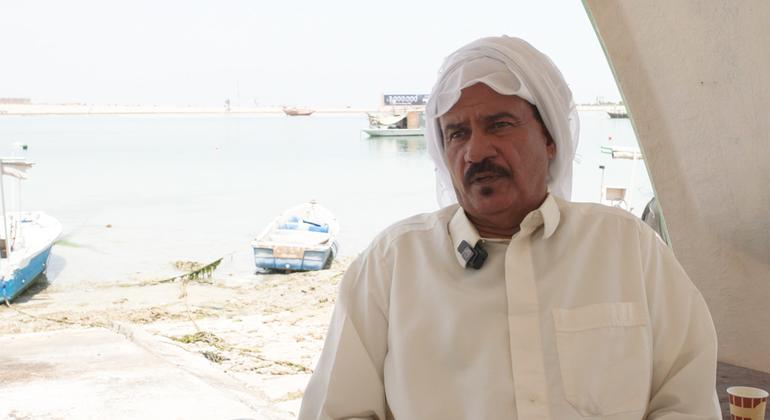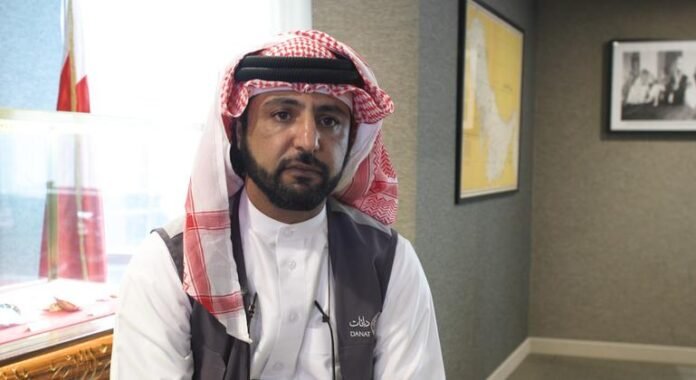Mohammed Alsalais, a pearl diver and field researcher at the Bahrain Institute of Pearls and Precious Stones (DANAT), believes the Gulf nation’s pearl collection tradition is not just a chapter in history – it’s an important part of its cultural identity.
“I always say: pearl diving is in the blood of Bahraini people,” Mohammed Alslais told UN News in an exclusive interview in Bahrain’s capital, Manama, where families who came to Bahrain from the Arabian Sea and the coast of Iran are almost all divers.
Mohammad Alslais is very passionate about preserving and reviving this ancient tradition. He says that many families in the Gulf countries had at least one member who was a pearl diver himself or associated with the pearl industry.
For thousands of years, Bahrain’s economy thrived on pearl harvesting in the Persian Gulf. But in the 1930s, Japan dominated the cultured pearl industry, sending the industry, which had reached its peak of prosperity in the 20th century, into a catastrophic decline.
Pearl collecting tradition in Bahrain
“Much of Bahrain’s heritage is linked to the pearl diving industry,” said Mohammed Alslais
For example, songs about pearl diving. The folklore of pearl diving has been passed down from generation to generation. Even today we sing the same songs that used to be sung on boats to boost morale.”
Adnan Ali Jubed, who worked as a diver for decades, retired three years ago.

“Pearl harvesting, apart from livelihood, is also beneficial for the body,” he said, adding, “There are special places to dive in Bahrain.”
“In ancient times, our ancestors used to go diving at specific times on specific days of the year, which was usually between April and July. Now, due to advances in exploration techniques, we can dive any time of the year. We love this profession and our children will carry it forward.”
Bahrain’s historic pearl site, known as the “Pearl Route”, is recognized as a World Heritage Site by the United Nations Educational, Scientific and Cultural Organization (UNESCO).
The site is a testament to the tradition of pearl gathering and the wealth it has generated for the Gulf region over thousands of years.
According to UNESCO, the area includes 17 buildings, the town of Murharrak, three coastal oyster beds, a stretch of beach and the fort of Kal’at Bu Mahir on the southern tip of Murharrak Island, from which boats depart for the oyster beds.

Shops, warehouses, a mosque and houses of wealthy traders are located in this area.
According to UNESCO, the site is the only complete example of pearl culture heritage and wealth generated during the Gulf Economy period, when trade dominated from the 2nd century until artificial pearls were developed in Japan.
The site also provides an excellent example of the traditional use of marine resources and human coexistence with the environment. It shaped the island’s social system, cultural identity and economy.
“When I take tourists there, I always ask them who they want to take this pearl for,” recalls Mohammad Alslais. “When they answer, ‘For my mother,’ the shape of the pearl found there suddenly seems huge.”
He explains, “I was one of those people who fell in love with pearl diving without any guidance from my parents or family. The generation before us wasn’t allowed to dive at a young age because of oil exploration.” After 1950 all employment was shifted to the oil industry.”

Pearl collection gets new life
According to Mohammed Alslais, when the Bahraini authorities started issuing licenses for pearl diving in 2017, many people joined the tradition with no prior knowledge.
Now, seven years later, many Bahrainis have reconnected with this tradition.
“We have developed a new system on our own initiative. We have also changed the diving technique and the method of selling pearls. Inspired by this new system invented by the new generation, many people have come to pearl diving.
Now more than 1,000 divers are registered and regularly go pearl diving, which brings them income.”
Modern pearl collection
Khalid Salman, who has been diving since the 1970s, said although diving is still practiced today, the old methods have been changed.
“These days, divers, thanks to technological advances, are able to stay underwater for long periods of time and extract large quantities of pearls. Earlier a diver could stay under water for four minutes, but now scuba divers can stay under water for an hour or more. .”

Regarding the low price of pearls, Salman said, “Many people do not sell the pearls they harvest; they store them until the price rises and when that time comes, they sell them to traders in Bahrain.”
Some pearls are used in local industries, while others are sold outside Bahrain.
He also explains that there are three types of pearls: synthetic, cultured and natural. “It is possible to distinguish between these types with experience and modern equipment,” he said.
Impact on shipbuilding
The decline of the pearl industry also affected Bahrain’s shipbuilding industry.
Abdullah, who has been building wooden ships and boats for more than 35 years, said: “Bahrain is famous for its shipbuilding industry. It was an integral part of the pearl collection.”
“There are many types of ships, which differ in design. But now smaller ships are being used to collect pearls as the demand has decreased.”
Timber for shipbuilding is imported from Africa and Singapore and “a ship can last more than 100 years.”

Technology and sustainability
Mohammed Alslais believes that oyster beds are being eroded due to techniques developed by new generations such as scuba diving.
But he says, “Scuba diving allows you to stay underwater for a limited amount of time — you can only dive three times a day, because of decompression sickness and other risks.”
He is optimistic about the future and says, “If God keeps me healthy, I will continue pearl diving. It gives me great satisfaction.”

